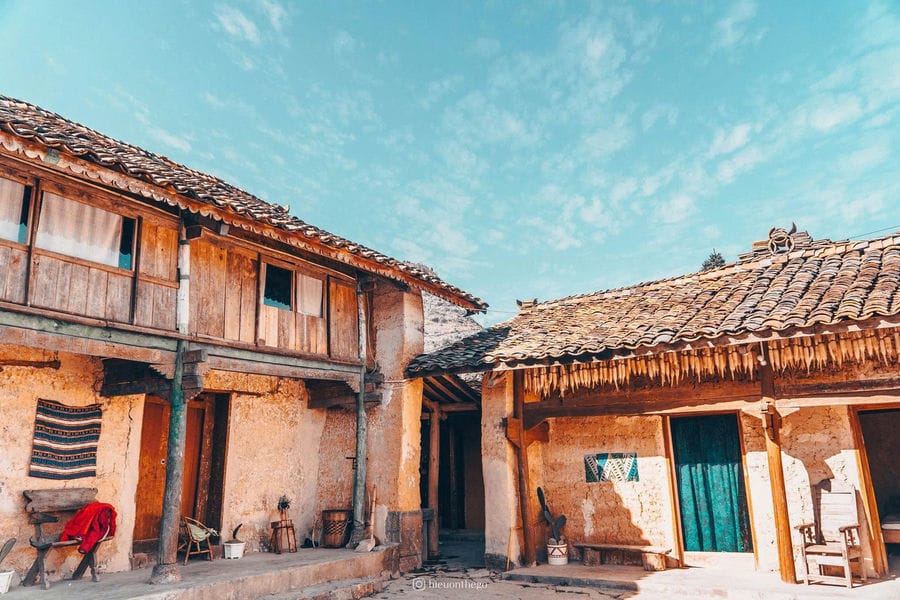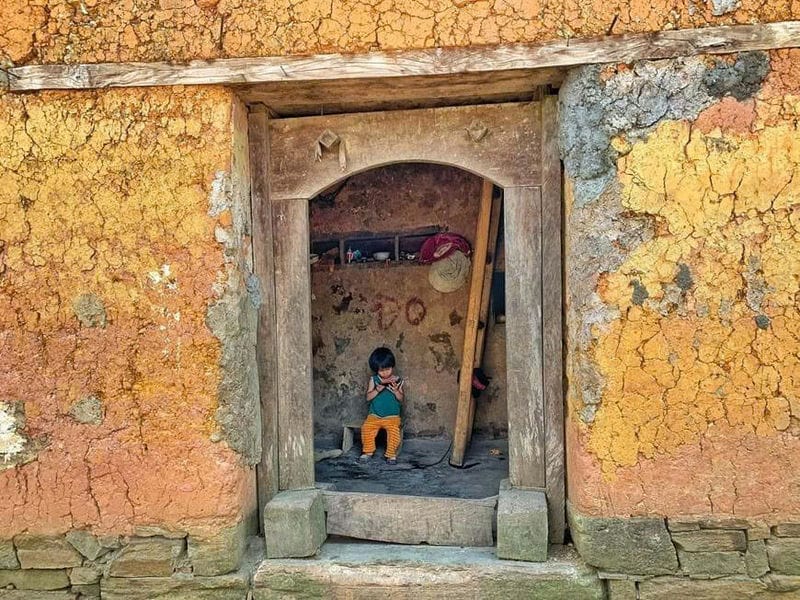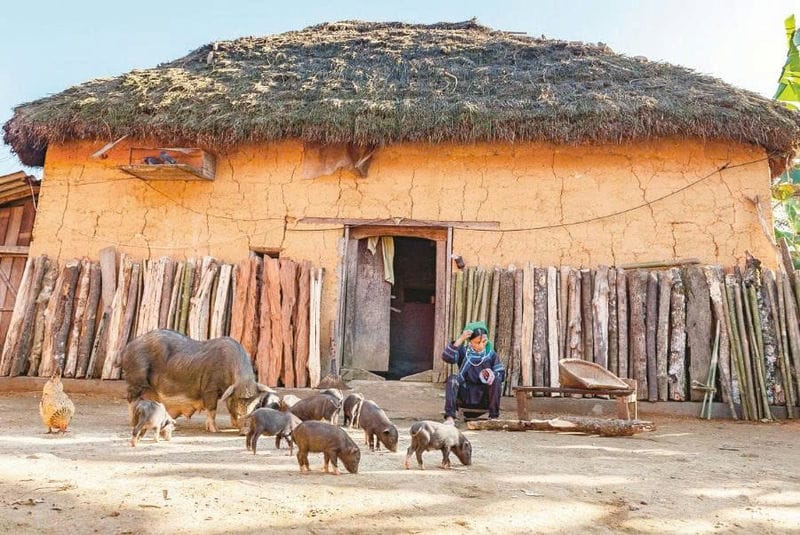Earthen Rammed-Wall Houses – The Highlanders’ Ingenious Defense Against the Cold in Ha Giang
Hidden amid the misty highlands of Ha Giang, Vietnam, are unique homes that appear modest yet hold centuries of wisdom: the earthen rammed-wall houses, or nhà tường trình đất. Built by ethnic groups like the Hmong and Dao, these structures are not only physical shelters, but also cultural testaments to human resilience and harmony with nature. Withstanding harsh winters and standing strong for decades, these homes reflect the sustainable, resourceful, and community-driven lifestyle of the northern mountains.

The Art of Rammed-Earth Construction
Constructing an earthen wall house is a communal effort, often taking several weeks and involving skilled neighbors and relatives. The primary material is compact local soil, sometimes mixed with a small amount of lime or ash to improve durability. Earth is compacted into shape using sturdy wooden frames known as 'khuôn trình,' with long-handled wooden mallets used to pound it firmly into place. This traditional technique is called “trình đất” — hence the name “nhà tường trình”
Layers are added gradually, each pressed tight until the wall is thick, solid, and capable of withstanding time and weather. Once completed, the walls can reach a thickness of 50 to 70 centimeters, providing excellent natural insulation against the cold.
While the technique may sound primitive, it is remarkably efficient: no need for cement, bricks, or steel. Everything comes from the land, and with skilled hands and patience, transforms into warm, sturdy homes that can last 50 years or more.
Natural Insulation and Resistance to Time
One of the standout features of these earthen houses is their thermal insulation. During Ha Giang's harsh winters, temperatures often hover near freezing, with icy winds sweeping across the rugged mountain terrain. But inside these homes, thick earthen walls retain warmth, offering comfort without the need for heating systems. In summer, they stay cool — a perfect balance naturally maintained.
The solid earthen walls maintain a consistent indoor temperature, soften external sounds, and regulate humidity, resulting in a calm and comfortable living space. According to many village elders, these traditional earthen houses often prove sturdier and more enduring than certain concrete constructions built today.
Maintenance is minimal. Every few years, households may re-plaster or re-coat sections of wall using new earth, keeping the home refreshed without replacing the core structure. This cyclical process mirrors the sustainable lifestyle of the highlanders — repair, reuse, and reconnect with nature.
Cultural Soul of the Highlands

Beyond their practicality, rammed-earth houses carry deep cultural meaning for ethnic groups such as the Hmong and Dao. Their layout typically includes an altar for ancestor worship, a kitchen with a wood-burning stove, and separate sleeping quarters divided by wooden planks or curtains.
The roof is usually made from clay tiles or thatch, with wooden beams cut from local forests. Traditional Hmong beliefs emphasize that a house should be positioned with its front toward the mountain and its back to the water, a layout thought to bring harmony and good fortune. Each stone and timber used in construction is carefully selected, often carrying symbolic value and spiritual significance bestowed through traditional rites.
These earthen homes serve as more than mere dwellings; they represent ancestral heritage, preserved and handed down through many generations. These walls hold the echoes of life’s important moments — from births and weddings to vibrant traditional festivals. They are physical archives of highland life.
A Quiet, Enduring Aesthetic
Amid the rise of modern architecture, rammed-earth houses remain distinctive with their enduring charm and natural, timeworn elegance. Their natural earthen hues — from warm browns to deep ochres — blend into the landscape. They seem to rise organically from the mountains, unobtrusive yet striking.
Photographers, architects, and ecologists alike are drawn to these dwellings. These homes reflect more than just traditional craftsmanship—they embody an eco-friendly philosophy, built with natural materials, low environmental impact, and the ability to return to the earth without leaving waste.
Increasingly, sustainable architecture advocates are studying the earthen building techniques of the Hmong and Dao as models for green construction. Their homes prove that beauty, functionality, and eco-friendliness can co-exist in perfect harmony.

Living in Harmony with the Elements
The choice of rammed-earth construction is not just about resource availability — it reflects a philosophy of living in tune with nature. The highland people do not seek to dominate their environment, but to adapt, preserve, and respect it.
In winter, the hearth becomes the heart of the home, drawing family members together for warmth and companionship.
As the firelight dances, the elders savor traditional corn wine and tobacco, while nearby children listen intently to ancient tales of mountain spirits. The thick walls outside guard them from wind and cold, just as they did generations before.
In summer, doors and windows are left open to let in fresh air, and the cool walls offer refuge from the sun. Life inside flows with the seasons, and the house remains a steady center of stability.
Challenges and Revival
Despite their many benefits, rammed-earth homes have been gradually declining, replaced by concrete and brick structures. Young people moving to cities often choose modern houses over traditional ones. Some see earthen homes as outdated or fragile.
However, there's a quiet revival underway. Eco-tourism, cultural preservation efforts, and sustainable design movements have brought new attention to these homes. Many ethnic minority villages have started restoring their traditional houses, turning them into guest accommodations or centers for cultural activities.
Visitors looking for genuine cultural experiences are captivated by the peaceful atmosphere of spending a night in a rammed-earth house.
Government and NGO initiatives also encourage preservation by offering training and support to builders who wish to maintain this heritage. In a time of climate change and environmental crisis, the wisdom hidden in these humble homes is more relevant than ever.
Conclusion
The rammed-earth houses of Ha Giang are more than just structures — they are living symbols of ingenuity, endurance, and cultural depth. Crafted directly from the earth beneath, these dwellings embody a lifestyle rooted in sustainability, simplicity, and a deep connection to the natural world.
Within each solidly compacted wall and around every hearth filled with smoke lie tales of heritage, resilience, and a lifestyle gently preserving tradition amidst modern change.
When discovering the mountains of Ha Giang, be sure to appreciate these natural, charming houses tucked into the rugged cliffs. Step inside one if you’re lucky — and you may just feel the warmth of a thousand winters, safely held within walls of earth.




.jpg)


